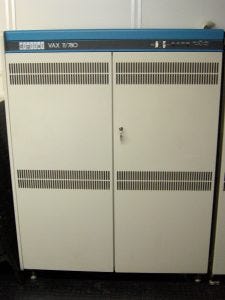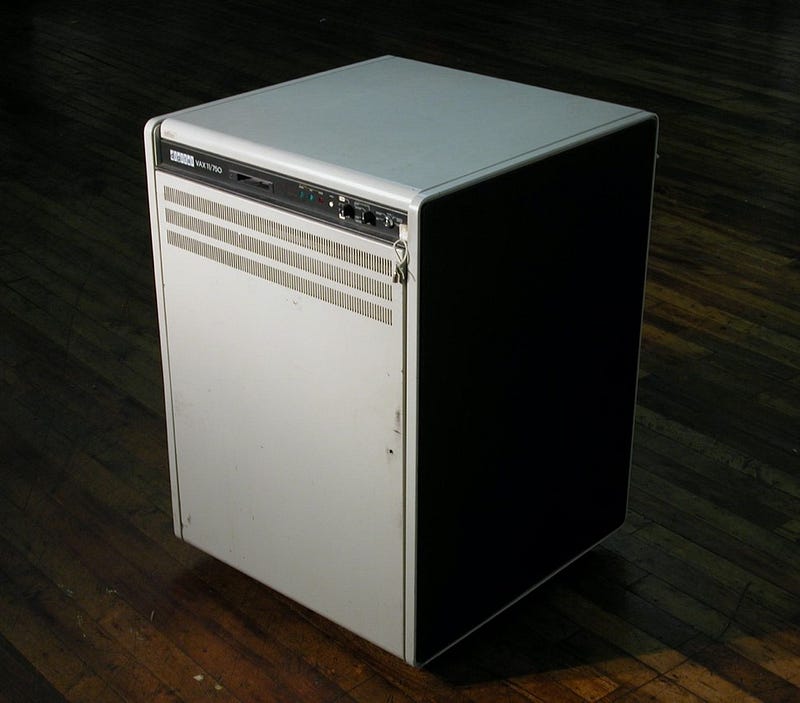My Memories in Networking: VAX, NetWare and Turbo Pascal

My Memories in Networking: VAX, NetWare and Turbo Pascal
And so this week it was announced that circuit-switched networks for phones will be switched off in the UK in 2025. So, all those people in AT&T that said packet switching would never scale as our circuit-switched network just didn’t see the future.
This all takes me back to the 1980s when I was responsible for building the networking infrastructure in the School of Electrical and Electronic Engineering. At the time, it was PCs v Sun/Apollo workstations v Microcomputers. PCs were very basic in those days, and it was either an IBM XT (with its horrible 8088 processor, 20 MB hard disk and 640KB of memory) or an IBM AT (which seemed like it was built from solid lead).
At the time I was promoted to Senior Lecturer, we had a DEC Vax 11:

I remember running classes for Pascal, and where we would have around 20 students compiling their programs at the same time — and the whole thing just gave up — and we would spend most of the class trying to remove compilations from the queue. It was not a good teaching experience. And, the VAX was costing us an arm and a leg in maintenance costs. I forget the costs, but I am sure it was around £15K per year for maintenance. For my first major decision as a Senior Lecturer, I decided that rather than spending the money on the maintenance of this “slow” computer, we would buy 15 computers at £1K each and network them. This shocked some of the academics in the School, as the VAX was a serious computer, whereas PCs were still seen as toys.
For software, we had two mighty programs: ORCAD and Turbo Pascal. To me, these two programs have never been beaten. With ORCAD, students could create schemas for electronic circuits and create PCBs. And Turbo Pascal from Borland was a dream compared to the VAX:

The Ctrl-K, Ctrl-C key strokes will never leave me. I taught with Turbo Pascal and Turbo C, and it made my life so much easier.
My first introduction to proper networking was with IPX/SPX, and where we expanded our PC network using the Novell NetWare networking. Basically, NetWare wasn’t TCP/IP, and mainly connected PCs to a local server. Each of the nodes on the network had an IPX address and it was localized in its scale. Most of the network traffic was local, and very little went to the Internet. I remember, at the time, logging in with the NetWare client:

In those days, there was no such thing as a network switch, twisted pair cables and RJ45 connectors. You had repeaters, but they tended to cause you more problems than the solved. Basically, to build the network we had a coaxial cable that spread over the labs and staff offices, and where T-piece connector was used to connect computers to the shared bus. In those days, there were no Cisco Catalyst switches, but where we had to use CSMA/CD (Carrier Sense Multiple Access with Collision Detection).
Basically, nodes had to contend for the network, and where they would have to wait to see if any other node was transmitting at the same time. This meant that the network worked fine with low levels of traffic but struggled when it neared its capacity. Another major problem was when staff disconnected their computers from the network — as this created an open circuit. With this, the signals basically travelled along the line until they reached the open circuit and then bounced back off. This caused a massive distortion of the signal and often ground the network to a hold. I spent many an hour tracing coaxial cables to find a fault.
The Apollo network supported our advanced e-CAD, and used Mentor Graphics software. Overall, it used an IBM Token Ring network and had the advantage of isolating the network from the Ethernet network, but it had problems when there was a break in the ring — as the token would get lost. Luckily, it had two rings so that nodes could actually patch around the node, but it affected the performance of the network. But, the PC soon caught up with the Apollo computers and software, and they were retired after a few years.
Conclusions
The rise of the PC and Cisco devices disrupted the world of computing.